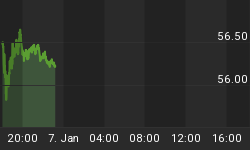Spain Joins the Negative Interest Rate Club
Reader Bran emailed a link this morning to an El Pais Article that showed interest on a 6-month treasury auction in Spain went negative.
Rather than translate, please consider the Wall Street Journal report Spain Joins Negative Yield Club.
Spain has joined the sub-zero debt club, just.
The Spanish Treasury on Tuesday issued short-term debt yielding a shade under 0%. The €725 million ($796 million) in six-month Spanish debt delivers an average yield to investors of -0.002%. Buyers were still keen, placing bids worth five times that amount, according to the Treasury.
Another slug of 12-month T-bills, also issued Tuesday, yields just 0.006%.
This is quite a turnaround for Spain. The country was at the heart of the eurozone debt crisis at its darkest hour. In June 2012, it sold similar short-term debt yielding 3.237%.
Negative Interest Rate Thesis
Ben Bernanke made the claim "In the weak (but recovering) economy of the past few years, all indications are that the equilibrium real interest rate has been exceptionally low, probably negative."
Quite frankly, that's idiotic.
In the absence of central bank monetary foolishness, negative interest rates cannot happen. I discussed that briefly in Thrown Under the Bus: Another Look at the Self-Serving Launch of Ben Bernanke's Blog and the Brookings Institute's Pandering Role.
Pater Tenebrarum's article Ben Bernanke's Apologia for the Fed that discusses why in detail, but a simple question is all it takes to prove the absurdity of it all.
Simple Question
Ask any person on the street, at random, if they would rather have a dollar today or 97 cents five years from today and they will probably look at you as if you were nuts for asking.
I believe the average 4th grader would understand the stupidity of the question. One would not even need a clear grasp on the subject of "time preference" to understand the absurdity of it all.
Heck, ask a 4-year old kid if he would rather have two lollipops today or one tomorrow. As long as the kid understands the question, I assure you he will know how to answer.
Natural Rate Can Never Be Negative
The "equilibrium" or "natural" rate can never be negative.
Interest rates are negative because central banks unleashed more money than anyone wants to borrow. Given deposit insurance only covers $250,000 and given money needs to find a home, depositors accept negative interest because they have no other choice. On top of that, the Swiss National Bank explicitly set deposit rates negative.
But the key reason rates are negative in many places is central banks use newly created money to buy bonds, and investors front run the trade. For further discussion, please see Another Definition of Deflation: Antal Fekete Defines Deflation as a "Pathological Slowing in the Velocity of Money".
The intention of the Fed (central banks in general) is to get businesses to invest and consumers to borrow. But what if businesses see little chance to make profits by expansion? What if credit-worthy customers do not want to borrow?
Deflation Shock Thesis
Central bank actions did not spur lending, so they buy more and more bonds, apparently under the theory "if it doesn't work, do more of it, until it does work". The ECB and Bank of Japan have taken over where the Fed left off.
Such idiocy has led to yet another asset bubble of enormous magnitude, in part fueled by corporations borrowing money at low rates to buy back their own shares at ridiculous prices.
When various bubbles in equities, junk bonds, and housing pop, the result will be an enormous deflation shock, the very deflation the central bank fools believe they are preventing.















